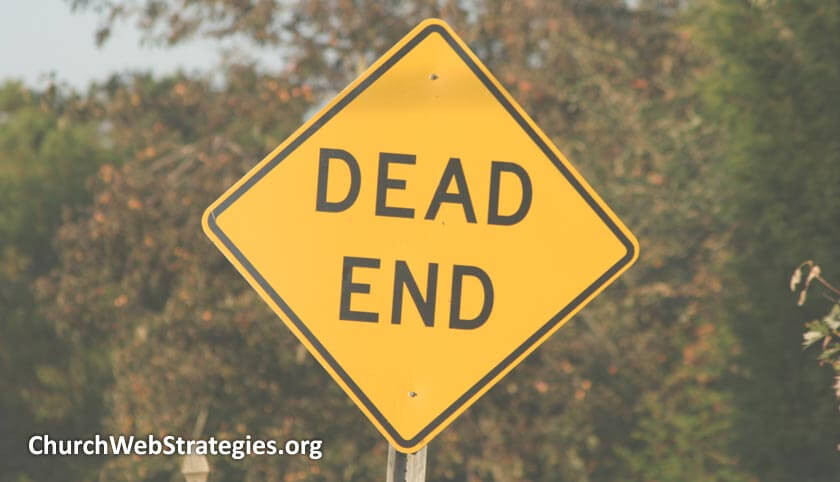The message of this article is pretty simple. Every path on your website should have a purpose and not lead to a dead end. This may seem like a simple concept, but I imagine that many parts of your website do not accomplish this. Never give your visitor the message that it is acceptable for them to close their browser. There should always be another page with more information or a next step to take. In this article I will first explore the mechanisms and treatments that allow you keep the conversation moving. Then I will review the tools you can use to help find any gaps your website may have.
Banners
One solution is to put calls to action in the side columns of the page. This solution is easy, but the least desirable. Many website users have “banner blindness” and will not even notice these. We often consider items in these locations to be external advertisements and our eyes scan right over them. However if your website templates and designs do not afford for anything else, it may be your only option.
Inline Links
Another way you can prevent a dead end is by using inline links. If you are referencing your youth ministry, make the words “youth ministry” a link to that section of your site. This will not only encourage visitors to explore other areas of your site, it will also help with search engine rankings. I provided examples of this in my SEO for your Church Website article (see what I did there?).
Curated Footer
The footer is often just a place a copy of items at the top of the page, terms of service, privacy statements, or other boring content. But between that boring content and the bottom of your page, you can add a new space with links to related content. There are many ways a pages relate to another. They can be a similar area of interest, have ministries located at the same geographic location, or targeted to the same demographic. How you structure and blend these relationships is up to you. However, I would style these so they appear connected to the primary content. Refrain from any styles like an advertisement stuck at the bottom of the page. I feel this is one of the best options. The user is either finished reading and ready to move on, or they skimmed down the page and did not find what they were looking for.
Exit Pop-Up
If you keep in regular contact with someone via email, you remind them of your church’s presence and the services. They key to this is of course getting their email address. Sign-up forms work well and can be separate pages or sidebar items. I do not advise intrusive design when a user lands on your site or even after they have been there some time. However, there are scripts that tracks when someone scrolls to the bottom of the page and back up (presumably to close the tab/window). Using a pop-up email request form is a last-ditch effort to keep in contact with people intent on leaving your site. So while it is disruptive, the users most likely to trigger it are going to leave your site anyway.
Tools
What tools can you use to ensure no dead ends exist on your website? You can add an extra data point to your content strategy document, including a line about what links are included on the page and why. Another is adding dotted line links between pages on your site map diagram. This should visually demonstrate how your are connecting various sections of your site. By adding this data to these tools, you are hopefully ensuring that no page is a dead end.
Action Item
If you have an existing site, conduct an audit of the content and how each can relate to the other. Document pages that seemingly have a dead end. If you have a truly unique page with nothing connecting to it; fall back on the exit pop-up. It may not be the most relevant, but if they liked what they saw, they will want to remain connected to your church. If you are still building your site, factor this rule into your navigation and page design so no user is left wondering what the next step is.
Image courtesy of Cheryl Empey

